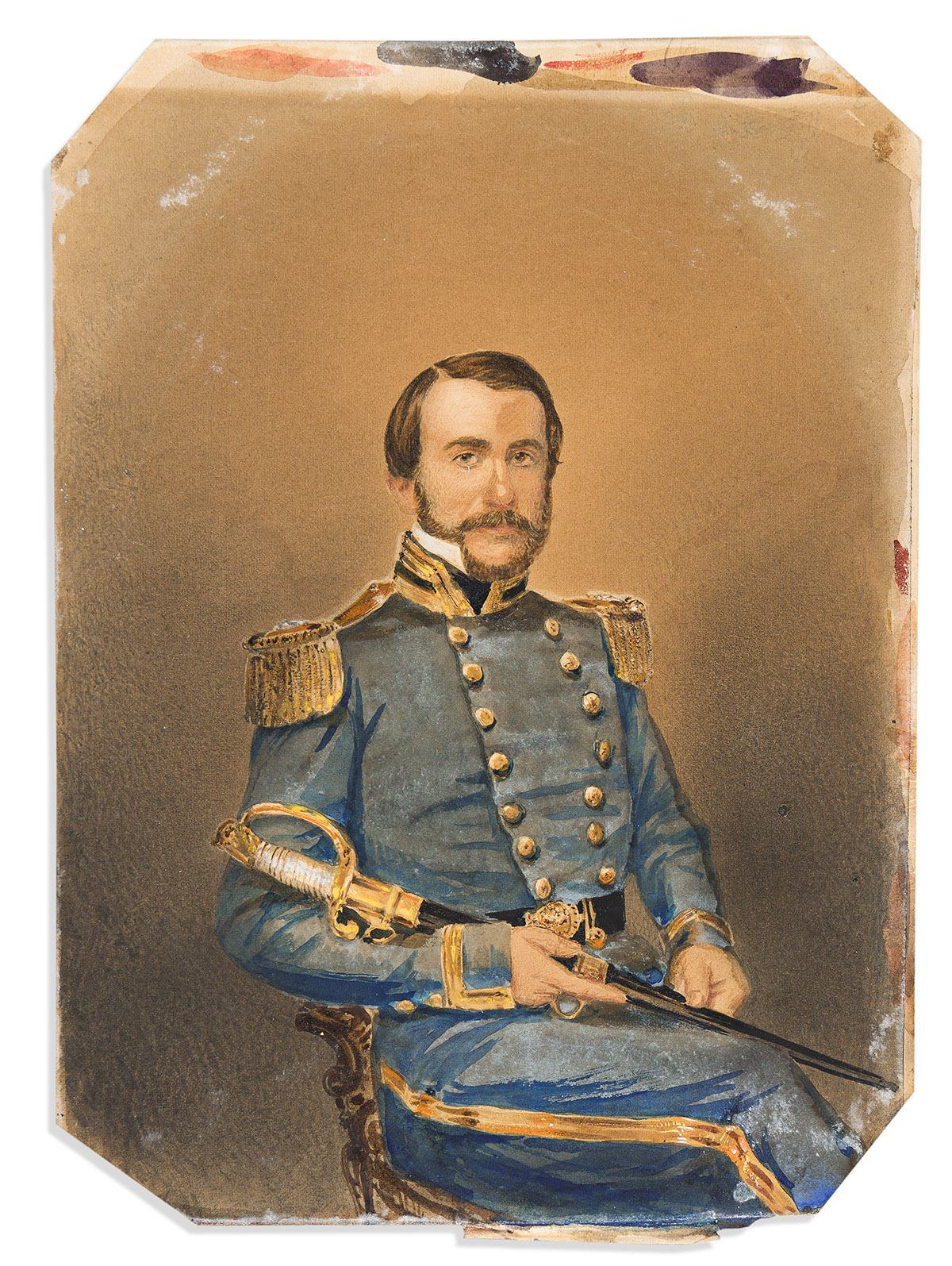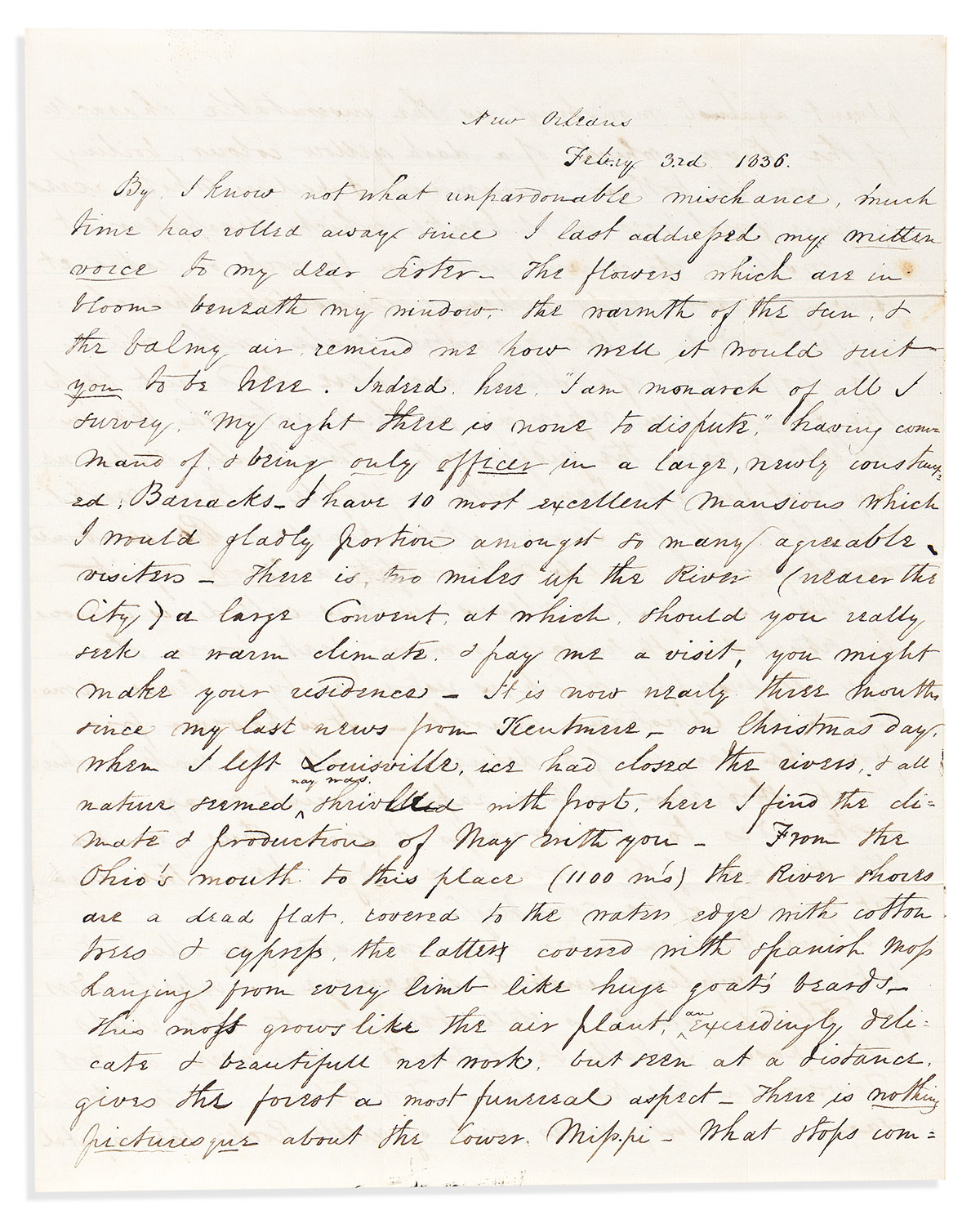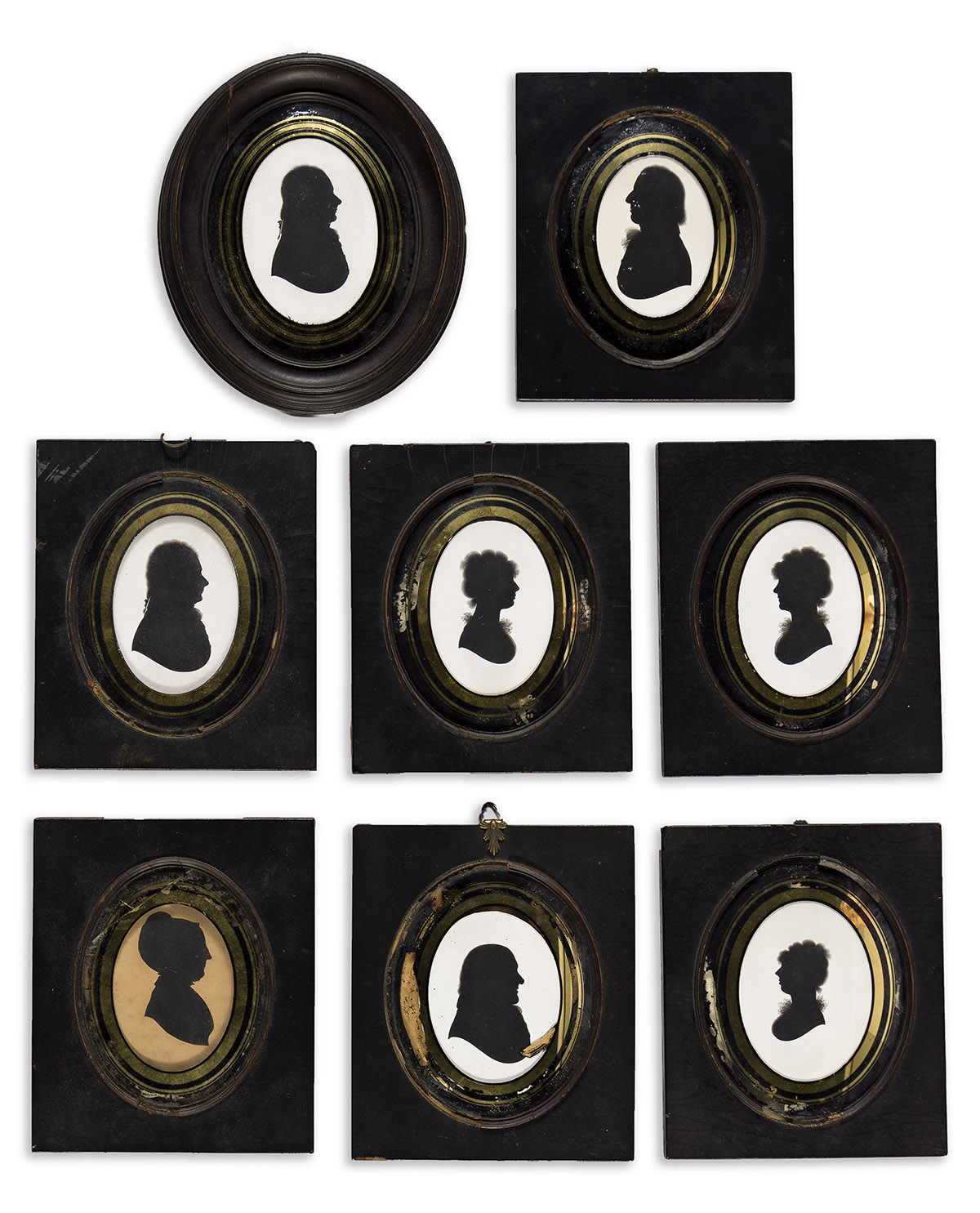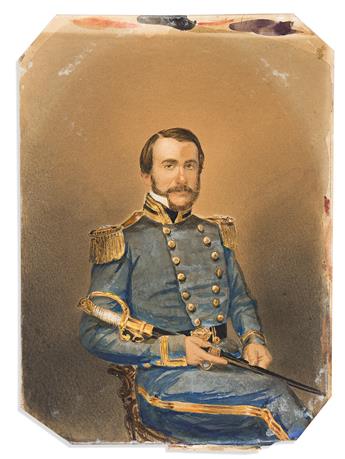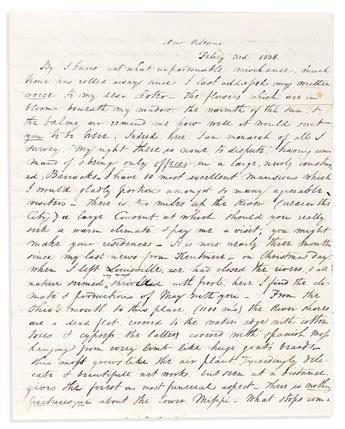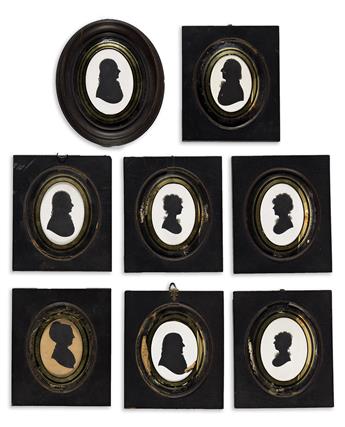Sale 2687 - Lot 129
Price Realized: $ 1,900
Price Realized: $ 2,375
?Final Price Realized includes Buyer’s Premium added to Hammer Price
Estimate: $ 1,500 - $ 2,500
(FAMILY PAPERS.) Papers of the distinguished Gilpin family. Approximately 65 items, 0.3 linear feet; various levels of wear, the letters to Henry D. Gilpin quite worn as noted. Various places, 1816-1847 and undated
Additional Details
Joshua Gilpin (1765-1841) was a prosperous and innovative papermaker in Brandywine, DE and Philadelphia. With his wife Mary Dilworth Gilpin (1777-1864), he had three notable sons: Henry Dilworth Gilpin (1801-1860), US Attorney General 1840-1841; Thomas William Gilpin (1806-1848), U.S. Consul to Belfast; and William Gilpin (1813-1894), Governor of Colorado 1861-1862. Their daughter Elizabeth (1804-1892) married merchant Matthew Maury (see the preceding lot). This lot includes:
6 letters from William Gilpin to his sisters, 1836-1844. During this period he was making his career in the Army and in business. The first letter is dated 3 February 1836, shortly after leaving West Point and accepting a commission in the 2nd Dragoons as a 2nd Lieutenant. Writing from New Orleans, he announces that "here, I am monarch of all I survey . . . being only officer in a large newly constructed barracks. I have 10 most excellent mansions which I would gladly portion amongst so many agreeable visitors." He offers a vivid description of the Lower Mississippi, which will "one day, not far off, teem with a people & their works." He also describes the hot springs at Washita, Arkansas (now Hot Springs). His letter of 5 October 1837 was written while serving in the Second Seminole War. It is dated from St. Augustine, FL (with postmark) but actually written on a hill seven miles south "in the midst of a pine barren, six or seven log houses & a few tents on its summit are dignified with the name of Fort Peyton. . . . The sterile nature of the country round, infested by myriads of muskitoes, added to the risk of loosing a scalp (for all the country beyond has been laid waste by, & is still in possession of the Indians) holds but slight inducements to ride abroad." He notes the recent capture of "King Philip & Euchre Billy, two very influential chiefs," who are being held at St. Augustine, adding that "I was on a short expedition 40 miles to the south a few days ago during which we met Co-ochoochie (Wild Cat), a Seminole chief & son of Philip, who gave himself up, & has since returned to his tribe having promised to bring in others of his people." William soon embarked on a career as a Missouri newspaper editor; his last three letters are written from Jonesboro, Arkansas; Independence, Missouri; and Jefferson, Missouri. The 4 May 1842 letter notes that "those who arrive from Mexico confirm and even exagerate the barbarous treatment inflicted on the Texians and Americans by the Mexican authorities."
Hand-colored photograph of seated man in military uniform, 8½ x 6 inches, unidentified but perhaps William Gilpin circa 1860?
3 letters are from Thomas W. Gilpin as Consul to Belfast, 1846-1847, in the heart of the Great Famine. On 7 December 1846: "The potato rot has already induced a direct trade to this country which will increase. From June 1843 to June 1846 not one American vessel visited this port. . . . Since the last date, nine have arrived cram full of grub of various kinds. . . . At present it is incredible the grim condition which exists in this country that not a single civilized vegetable exists in the world but potatoes."
A thick folder of family letters to Henry D. Gilpin circa 1828, water-damaged and in very poor condition.
Pair of commonplace books by Joshua's daughter Sarah Lydia Gilpin (1802-1894), 1816-1820.
Group of 8 framed silhouettes of the Gilpins and friends, attributed to English artist John Miers, most with later notes on the sitters on verso. The two portraits of patriarch Joshua Gilpin have printed Miers labels affixed to the verso. Also included are Sarah Dilworth, Mary Gilpin, James Jenkinson, and Jane Lawson.
Pair of engraved armorial bookplates of J. Gilpin; an undated list of Philadelphia commercial contacts; and 3 other family letters.
6 letters from William Gilpin to his sisters, 1836-1844. During this period he was making his career in the Army and in business. The first letter is dated 3 February 1836, shortly after leaving West Point and accepting a commission in the 2nd Dragoons as a 2nd Lieutenant. Writing from New Orleans, he announces that "here, I am monarch of all I survey . . . being only officer in a large newly constructed barracks. I have 10 most excellent mansions which I would gladly portion amongst so many agreeable visitors." He offers a vivid description of the Lower Mississippi, which will "one day, not far off, teem with a people & their works." He also describes the hot springs at Washita, Arkansas (now Hot Springs). His letter of 5 October 1837 was written while serving in the Second Seminole War. It is dated from St. Augustine, FL (with postmark) but actually written on a hill seven miles south "in the midst of a pine barren, six or seven log houses & a few tents on its summit are dignified with the name of Fort Peyton. . . . The sterile nature of the country round, infested by myriads of muskitoes, added to the risk of loosing a scalp (for all the country beyond has been laid waste by, & is still in possession of the Indians) holds but slight inducements to ride abroad." He notes the recent capture of "King Philip & Euchre Billy, two very influential chiefs," who are being held at St. Augustine, adding that "I was on a short expedition 40 miles to the south a few days ago during which we met Co-ochoochie (Wild Cat), a Seminole chief & son of Philip, who gave himself up, & has since returned to his tribe having promised to bring in others of his people." William soon embarked on a career as a Missouri newspaper editor; his last three letters are written from Jonesboro, Arkansas; Independence, Missouri; and Jefferson, Missouri. The 4 May 1842 letter notes that "those who arrive from Mexico confirm and even exagerate the barbarous treatment inflicted on the Texians and Americans by the Mexican authorities."
Hand-colored photograph of seated man in military uniform, 8½ x 6 inches, unidentified but perhaps William Gilpin circa 1860?
3 letters are from Thomas W. Gilpin as Consul to Belfast, 1846-1847, in the heart of the Great Famine. On 7 December 1846: "The potato rot has already induced a direct trade to this country which will increase. From June 1843 to June 1846 not one American vessel visited this port. . . . Since the last date, nine have arrived cram full of grub of various kinds. . . . At present it is incredible the grim condition which exists in this country that not a single civilized vegetable exists in the world but potatoes."
A thick folder of family letters to Henry D. Gilpin circa 1828, water-damaged and in very poor condition.
Pair of commonplace books by Joshua's daughter Sarah Lydia Gilpin (1802-1894), 1816-1820.
Group of 8 framed silhouettes of the Gilpins and friends, attributed to English artist John Miers, most with later notes on the sitters on verso. The two portraits of patriarch Joshua Gilpin have printed Miers labels affixed to the verso. Also included are Sarah Dilworth, Mary Gilpin, James Jenkinson, and Jane Lawson.
Pair of engraved armorial bookplates of J. Gilpin; an undated list of Philadelphia commercial contacts; and 3 other family letters.
Exhibition Hours
Exhibition Hours
Aliquam vulputate ornare congue. Vestibulum maximus, libero in placerat faucibus, risus nisl molestie massa, ut maximus metus lectus vel lorem.



